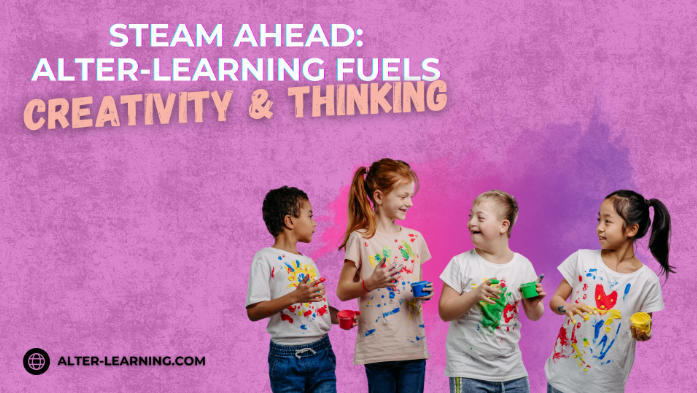STEAM education — science, technology, engineering, arts, and math — goes beyond teaching content. It teaches thinking. In today’s classrooms, educators are seeking ways to help students become creative problem-solvers, adaptive thinkers, and confident collaborators.
Immersive learning platforms that integrate STEAM concepts into dynamic, hands-on experiences can support this goal, and that’s what Alter-Learning offers. Through interactive simulations, music-based exploration, and engineering puzzles, students may find new ways to engage both sides of their brain — fueling innovation, not just information.
Bridging the Arts and Sciences in Virtual Spaces
One of the core strengths of STEAM education lies in its ability to blend analytical and creative disciplines. The integration of music, visual design, and movement with math, physics, and technology can make learning more holistic — and more human. Immersive learning environments that incorporate creative arts education software can allow students to:
- Experiment with rhythm, melody, and harmony in simulated music studios,
- Collaborate on performances using instrument mechanics and responsive feedback,
- Compose original music within structured activities that teach sound theory,
- Explore the links between pattern recognition in music and spatial reasoning in math.
This kind of interactive STEAM learning can help students build not only knowledge but also confidence and creativity — skills that support expression and problem-solving in every subject.
Supporting Collaboration and Improvisation
STEAM-focused immersive platforms often feature multiplayer modes or shared environments that encourage learners to work together, trade ideas, and solve problems in real time. Whether it’s through musical improvisation or collaborative puzzle-solving, students have opportunities to develop soft skills alongside cognitive ones.
Key skills supported by collaborative STEAM environments may include:
- Creative risk-taking, as students explore unfamiliar instruments or strategies,
- Empathetic communication, particularly in group performance or problem-solving tasks,
- Active listening and pattern recognition, foundational to both music and mathematics,
- Role-based teamwork, where learners adopt different responsibilities in a shared mission.
These interactions help reinforce the idea that STEAM isn’t just about individual achievement — it’s about co-creation.
Cultivating Flexible Thinking
One of the most valuable aspects of interactive STEAM learning is its ability to nurture flexible thinking. Immersive tools that require students to toggle between disciplines — say, by analyzing a musical pattern to solve a spatial problem, or using knowledge of electric currents to activate a virtual structure — can help learners develop transferable cognitive skills.
Features that support this include:
- Mixed-modal challenges that require using both logic and creativity,
- Narrative-driven environments where context guides problem-solving,
- 360-degree educational videos that present concepts from different angles,
- Progressive task design that allows students to return and rework earlier challenges.
This kind of learning design can help students become more adaptable, capable of viewing problems from multiple perspectives and applying knowledge in new ways.
STEAM learning is not about picking between disciplines -it’s about integrating them to build richer, deeper educational experiences. Through immersive tools that allow students to compose, design, collaborate, and solve, Alter-Learning can support the development of minds that think critically and creatively. By pairing structured academic goals with hands-on exploration and storytelling, these platforms invite students to imagine, to build, and to create solutions for the world they will one day shape.
Follow Alter-Learning for more insights into immersive education, edtech success stories, and the future of learning. Want to explore how VR/AR could transform your school or learning platform? Let’s connect.




